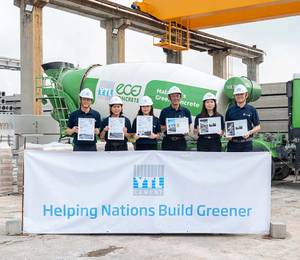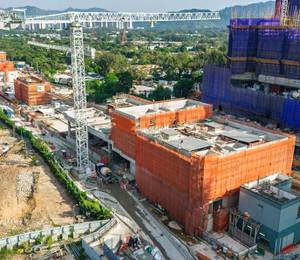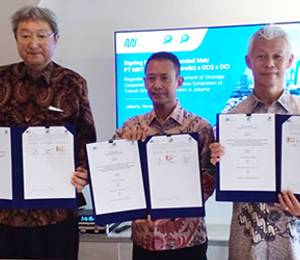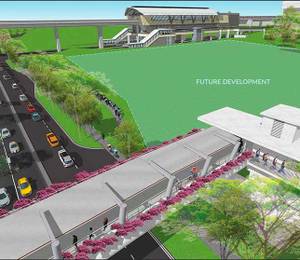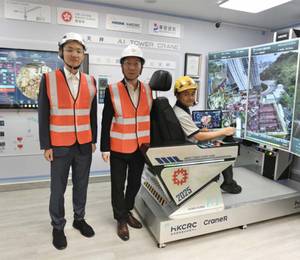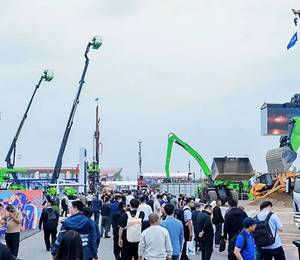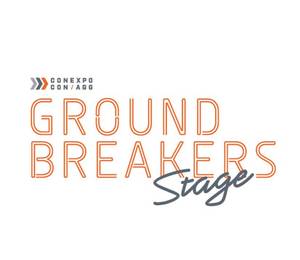A number of major contractors in Singapore – Expand Construction, Hi-Tek Construction, Kimly Construction, Ngai Chin Construction, Soilbuild Construction Group, Teambuild Construction Group and Wee Hur Construction – have leveraged ESGpedia in their environmental, social and governance (ESG) journey to achieve increased competitiveness in securing project tenders with sustainability criteria, amidst growing demand for a green built environment.
“In Singapore where buildings account for 20% of national carbon emissions, the industry faces a lack of awareness, due to complex ecosystems and carbon emissions involved at every step of a building’s life cycle,” explained ESGpedia, a Singapore-based ESG data and technology solutions company serving the Asia region.
“However, demand for greener buildings in both public and private tenders has grown significantly over the years, with the Singapore government including environmental criteria for government projects starting from 2024. Developers and construction companies face pressure to track and demonstrate their sustainability commitment, in order to maintain competitiveness in the industry and secure project tenders.”
Benjamin Soh, founder and managing director of ESGpedia, said, “With project tenders increasingly incorporating sustainability criteria, we are delighted to have empowered these major home-grown built and construction companies in their sustainability reporting journey, boosting their competitiveness and driving their sustainability efforts with real-time data insights into their greenhouse gas emissions at a project level.
“Greening the built environment requires collaboration amongst all developers and contractors. ESGpedia remains committed to supporting businesses in the sector towards ESG compliance and excellence.”
Company-level sustainability reports
Sustainability reports transparently communicate an organisation’s ESG efforts and impacts to stakeholders such as customers, investors, financiers and employees. To effectively navigate the complexities of sustainability reporting in alignment with international and local standards, Expand Construction and Hi-Tek Construction leveraged ESGpedia to generate their first company-level sustainability report, ensuring compliance with local and international standards such as GRI, ISSB, ISO and SASB.
Having started its sustainability journey in compliance with ISO14001, Expand Construction – whose extensive portfolio includes Housing Development Board’s (HDB) public housing projects, and infrastructure projects like the ongoing NS Square at Marina Bay – was able to complete its 2024 sustainability report in approximately two weeks with ESGpedia.
Kenneth Siew, executive director of Expand Construction, said, “ESGpedia provided us with an automated, guided and simple way to calculate our carbon emissions across Scope 1 to 3, converting operational data into emission figures, and allowing us to have better insights into our carbon emissions.”
Hi-Tek Construction, which specialises in HDB Build-To-Order (BTO) and Home Improvement Programme (HIP) projects, also successfully completed its first inaugural sustainability report, which revealed opportunities for cost savings through technological implementation.
Toh Chee Boon, deputy managing director of Hi-Tek Construction, explained, “We have enhanced our attractiveness and competitiveness in project tenders with ESGpedia as our sustainability reporting partner. This has led to higher success rates in securing projects, especially those with ESG requirements. Informed investment decisions are key to convincing stakeholders to invest in technologies and further sustainability initiatives, creating a roadmap for future improvement for Hi-Tek Construction.”
Both construction companies were able to successfully publish their sustainability reports, gain better insights into their carbon emissions, work towards green certifications, and set active pathways towards their decarbonisation targets.
Project-level embodied carbon reports
Companies in the built environment are subject to project-level reporting, to account for the environmental impact of individual construction sites. However, the sheer scope poses complexity, with the multitude of factors that must be taken into consideration to properly account for a project’s embodied carbon, ranging from project type, to type of machinery or robots used, materials used, and more.
Ngai Chin Construction as well as Soilbuild Construction, whose portfolio includes the Port of Singapore (PSA) Supply Chain Hub at Tuas, faced challenges in project-level reporting, from highly manual data collection methods involving excel-prone excel spreadsheets, and inconsistent data formats from suppliers and subcontractors.
To overcome these data challenges and ensure the accuracy of disclosures, both construction companies embarked on embodied carbon emissions reporting and subcontractor engagement with ESGpedia, for their wide portfolio of projects.
Using ESGpedia, Ngai Chin Construction was able to easily generate an embodied carbon report on a project level for an office refurbishment project it had carried out for a large corporate entity.
Clifton Chong, sustainability lead of Ngai Chin Construction, said, “As an SME, we often lack resources and expertise to effectively measure our sustainability progress. With growing focus on sustainability from clients and the government, ESGpedia has empowered us on our sustainability journey.”
Emission factors were seamlessly matched within the ESGpedia platform and existing environmental product declarations (EPDs) were used to ensure efficient and accurate carbon footprint assessments.
Han Ren, executive director and group CEO of Soilbuild Construction, said, “We have always been forward-looking and interested in new clean technology that could further our decarbonisation goals on site. Having project-level reports will provide valuable insights and guide our next steps which we are excited to embark on.”
Value chain decarbonisation
The increased pressure on companies to manage their Scope 3 emissions and green their supply chains, has prompted construction companies to start engaging their subcontractors early to achieve full value chain visibility.
Kimly Construction, which is involved in residential, commercial and institutional building projects, set out to work with ESGpedia with a goal to meet the regulatory deadline to disclose sustainability reports by 2027, but faced challenges in efficiently gathering data from various projects and partners.
Teambuild Construction faced similar obstacles: collecting data from its residential projects such as Grove Spring at Yishun and Punggol at Northshore Edge was challenging for the company, complicated by the need to coordinate simultaneously with numerous subcontractors and suppliers.
“The lack of industry benchmarks hindered our ability to effectively track and manage environmental impacts effectively,” shared Victoria Tan, deputy director of corporate development at Teambuild Construction. “The process was manually intensive, relying heavily on disparate data sources and time-consuming compilations.”
ESGpedia worked with the construction companies to launch a co-branded portal (Kimly Construction - kimly.esgpedia.io, Teambuild Construction - teambuild.esgpedia.io, and Soilbuild Construction - soilbuild.esgpedia.io), which empowered these main contractors and developers to actively engage with their subcontractors.
Justin Chew, senior manager of enterprise sustainability & corporate QA/QC at Kimly Construction, and head of Kimly Academy, explained that the co-branded portal allowed them to “streamline the process of empowering subcontractors to calculate their emissions, from onboarding and data collection to monitoring, overall helping us to gain better visibility and manage our full value chain emissions.”
The construction companies were able to achieve manhour savings from reducing the need for manual data entry on behalf of their upstream vendors, and gain real-time updates for full value chain reporting.
Ms Tan added, “ESGpedia empowered us to streamline our carbon accounting process and manage sustainability reporting more effectively. We can now actively engage our contractors, as well as collect and track their data, reducing the need for manual data entry and allowing for real-time updates and comprehensive full value chain reporting.”
Scope 3 reporting
HDB has announced plans to track and disclose Scope 3 emissions, with a focus on emissions from its contractors’ activities on the various HDB projects. This signals an industry move towards Scope 3 disclosures in the near future. Scope 3 emissions tracking can be a tedious process, involving companies’ subcontractors emissions.
According to Soilbuild Construction, although it is tracking Scope 3 emissions for the first time for projects such as Tuas Port, the ESGpedia platform has made it easy to categorise carbon emissions, even breaking them down into the 15 sub-categories, which allows the company to easily identify areas of improvement.
Kimly Construction has begun including its sustainability initiatives and reports when bidding for tenders, including its Scope 3 emissions tracking. Mr Chew said, “There are many other considerations such as price and engineering proposals that can influence the tender outcome. Nevertheless, I believe our collective sustainable strategies offer intangible advantages in recent tenders.”
Wee Hur Construction has begun tracking Scope 3 emissions in compliance with reporting requirements for listed companies. Access to subcontractors’ sustainability data was a key challenge the team faced.
Tay Hock Joo, chairperson of ESG committee at Wee Hur Construction, said, “ESGpedia has helped us to determine what type of data to collect for Scope 3, resolving the most challenging aspect for us. ESGpedia is a reliable platform for carbon accounting, allowing us to embark on Scope 3 reporting to fulfil tender sustainability criteria and comply with SGX listed company reporting criteria.”
Moving forward, Scope 3 calculation and reporting will become an essential part of climate disclosures across all industries. Along with digital tools, collaboration across every stage of a business’ supply chain remains crucial for transparent and accurate disclosures.
Growing demand for a green built environment
In 2025, investors are expected to place a higher green premium on ESG-certified assets in Asia Pacific – especially when it comes to the acquisition and development of green buildings.
As sustainability criteria continue to grow in government tenders, it is inevitable that these requirements will in due course spill over into the private sector, with the demand for green buildings and construction increasing over time.
“ESGpedia has been instrumental in transforming [Teambuild Construction’s] approach to sustainability, by supporting our business in ensuring compliance with global sustainability standards,” said Ms Tan. “The enhanced accuracy in carbon footprint calculation has provided us a deeper understanding of our company’s environmental impact, enabling more efficient practices and fostering a culture of transparency and accountability in our operations.”
It is crucial for both developers and contractors to take their first steps towards sustainability early to ensure compliance, and advantage in winning tenders and procuring business deals.
